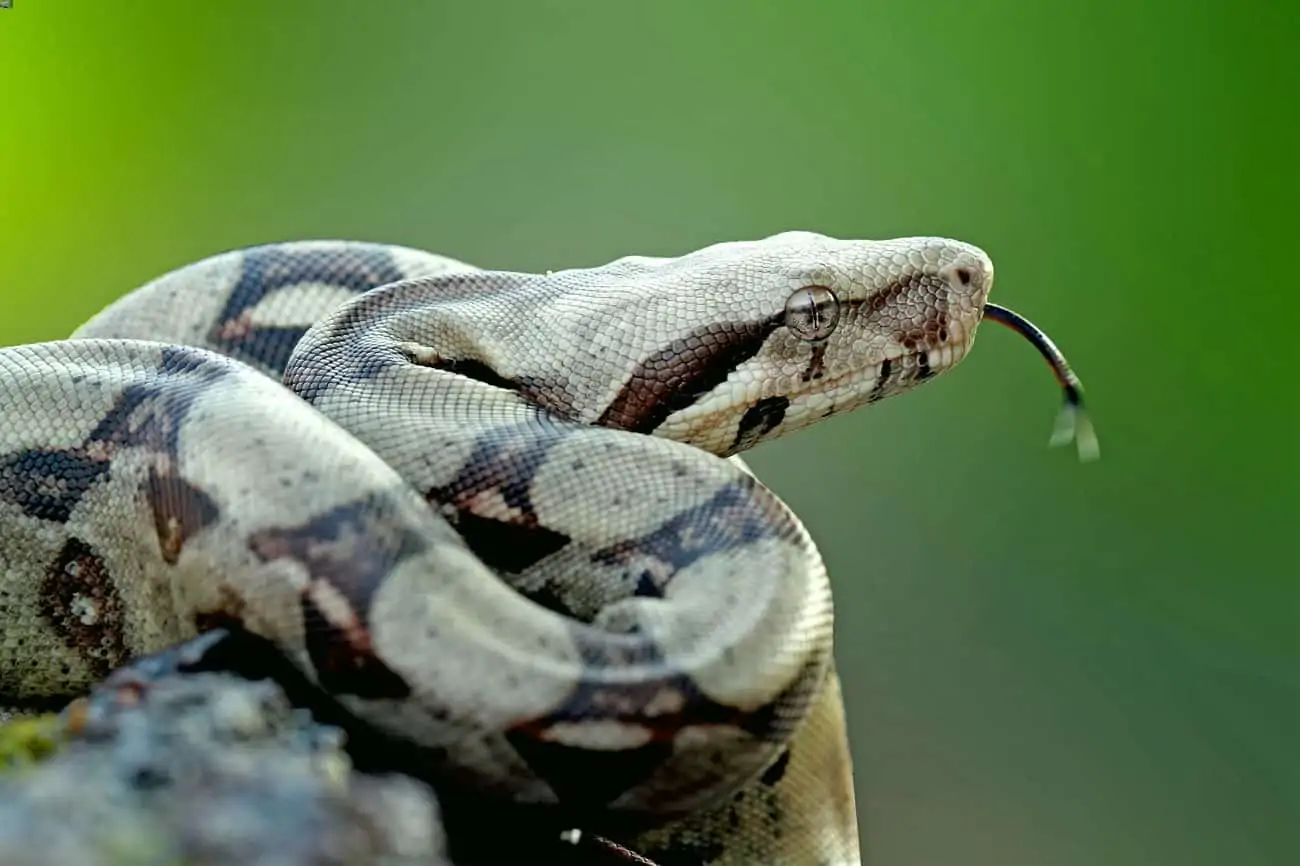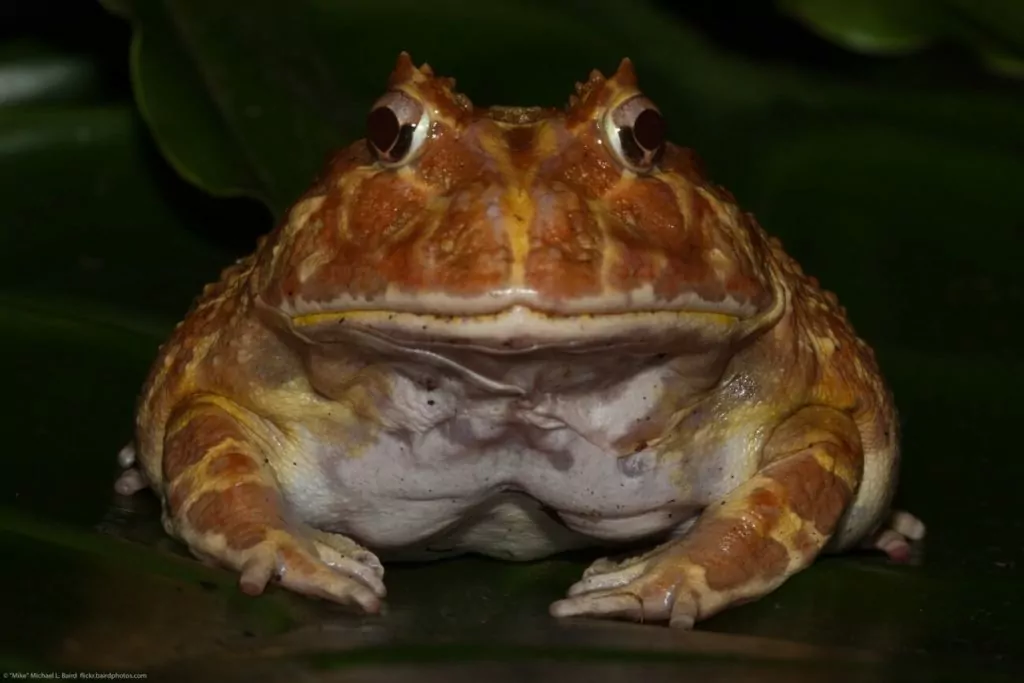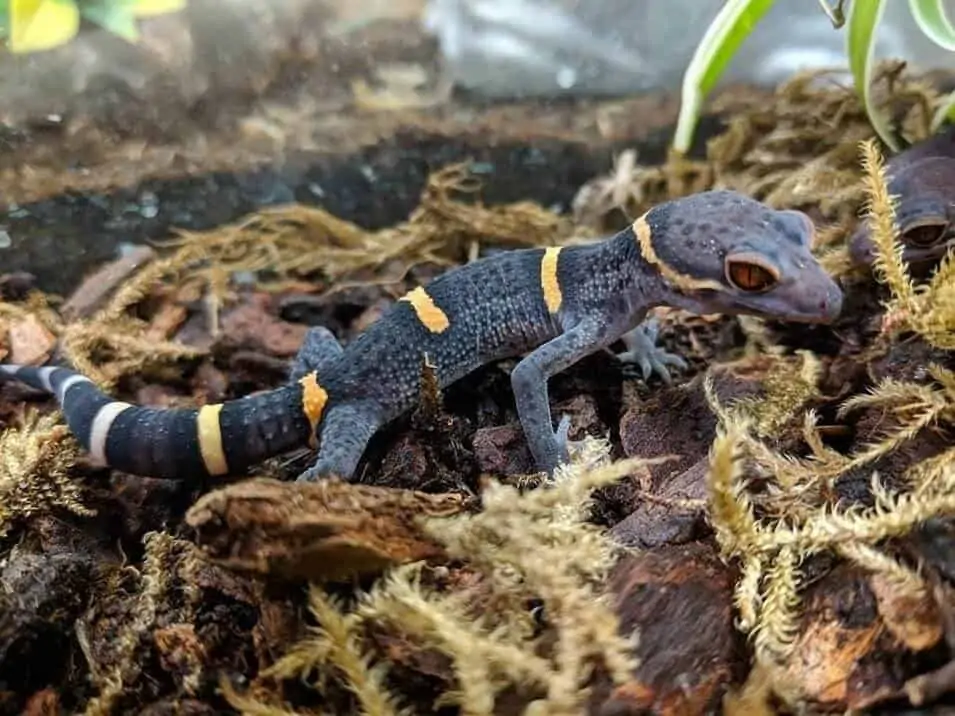Colombian red tail boas are unique pet snakes that have a very pretty look. They’re also quite peaceful, making them fairly easy to handle.
But there are some things you’ll need to know if you’re interested in getting one. These snakes are definitely not for beginners!
This guide goes over everything you need to know when it comes to Colombian red tail boa care. By the time you’re done reading it, you’ll know exactly what to do (and if this snake is right for you).
Table of Contents
Species Summary
A favorite among collectors, the Colombian red tail boa (Boa constrictor imperator) is a beautiful snake with some distinct physical features. Technically speaking, the Colombian red tail is not its own species. Rather it’s one of nine boa constrictor subspecies.
Expert Tip: Interestingly enough, there are also separate varieties within the subspecies based on locality.
Semantics aside, this particular type of pet snake is hugely popular in herpetology circles. While it looks similar to the standard boa at face value, its iconic red tail becomes apparent with closer observation.
As you can guess from the snake’s common trade name, these creatures are most-often found throughout Colombia. Though, they can also inhabit rainforests and arid environments in South and Central America.
Appearance & Colors
The Colombian red tail boa has all the signature traits of a standard boa. They are relatively large snakes with a girthy and muscular build.
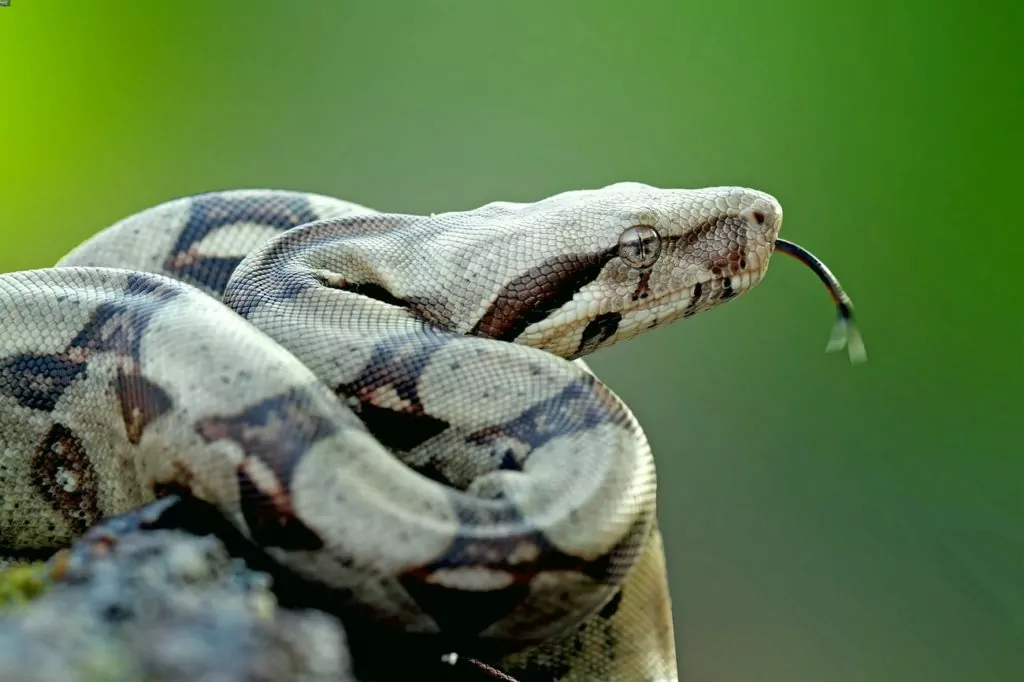
The head is shaped like an arrow. Several stripes run dorsally and laterally on the face to create the snake’s naturally intimidating looks.
Color can vary a bit based on where the snake comes from. But generally, you can expect to see a base color of brown, tan, or gray. Accompanying the base color are darker patches of brown and black. These are referred to as “Saddles.”
The saddles run the length of the snake and become more intense towards the tail. More vivid tail coloration is common in all boa constrictor subspecies. But in the Colombian red tail boa, the coloration is noticeably redder than any other snake in the boidae family.
You might encounter some unique morphs as well, such as albino snakes. Morphs are quite common in captivity thanks to selective breeding. However, you’re more likely to find natural coloration due to the snake’s frequent importation.
Colombian Red Tail Boa Size
The typical Colombian red tail boa size is between 6 and 10 feet in length when kept in captivity (sometimes even longer). As you can tell, these snakes can get quite large!
The largest boa constrictor ever recorded was over 18 feet! While rare, measurements over the average do occur. As for weight, adults will tip the scales at around 60 pounds.
Expert Tip: Females will grow to be bigger than males in terms of length and girth. A female Colombian red tail boa can grow to be between 7 and 10 feet long. Males will usually stop growing after they reach 6 to 8 feet.
Lifespan
Colombian red tail boas aren’t just big. They’re also a long-lived snake.
The average lifespan for a Colombian red tail boa is 20 to 30 years in captivity. Like size, outliers can live beyond 30 years (but those instances are rare).
There’s no way to know for sure how long a snake will live. The best thing you can do is to provide the best care possible. Snakes that receive lackluster care can suffer from disease and premature death.
Colombian Red Tail Boa Care
Colombian red tail boa care can be a bit of a challenge due to their size. These snakes require a lot of space and a well-maintained environment to stay healthy.
We recommend these pets for owners who have a bit of experience. Some knowledge can go a long way in helping you keep a Colombian red tail happy and healthy.
Enclosure Size
Let’s start with the enclosure. Colombian red tail boas are an interesting bunch. While many assume that larger is always better, that’s not the case with these reptiles.
As juveniles, a larger enclosure will cause unwanted stress and anxiety. The key is to choose an appropriately sized enclosure for every stage of growth.
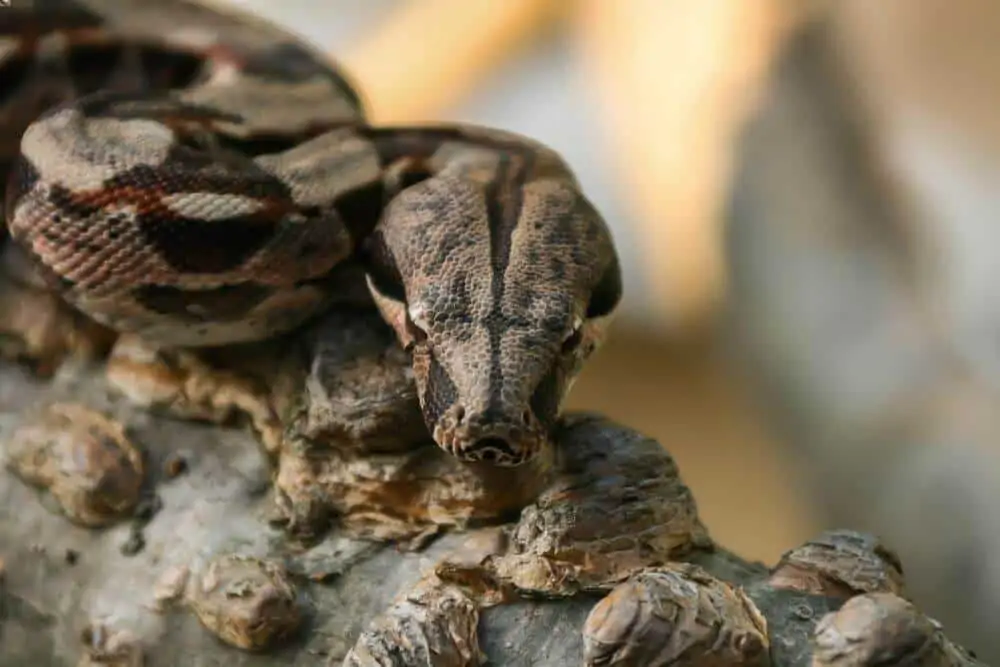
Young snakes will do fine in a vivarium-style enclosure that’s about 30 inches long, 12 inches wide, and about 12 inches tall. If you don’t want to invest in a fancy vivarium until your snake is fully grown, you can always use a plastic box or glass terrarium.
Continue to get larger enclosures as your snake grows. As an adult, these snakes need an enclosure that’s no smaller than about 4 feet long by 2 feet wide. You can go a bit larger with adult snakes if needed.
Expert Tip: As a good rule of thumb, provide an enclosure with a length measurement that’s at least two-thirds the length of your snake.
What To Put In Their Habitat
Colombian red tail boas are pretty adaptable to life in captivity. In the wild, they’re capable of living in a wide range of environments.
That said, most tend to prefer the humid conditions of a rainforest. It’s best to model your enclosure after that environment.
Start with an absorbent substrate material. If you’re looking to keep costs low, newspaper works well. It’s easy to clean and is perfectly safe for the snake. Reptile carpet is a suitable choice, too.
A more natural alternative is aspen shavings. Avoid any untreated cypress or other wood species that contain oils. Cypress, in particular, has oil that’s toxic to snakes.
After adding a layer of substrate, install two hide boxes and place them on opposite sides of the enclosure. Both boxes should be large enough for your snake to relax in.
You can add other decorative items to improve the quality of life for your snake. Some good examples include climbing shelves or branches and plants.
Expert Tip: Additional accessories are not essential. Colombian red tail boas do just fine in a sparsely decorated enclosure. However, some extras can make the environment more natural-looking and enjoyable for the snake. Just make sure you have adequate room before you overcrowd the enclosure.
Temperature & Lighting
We recommend investing in multiple thermometers for your Colombian red tail boa. These cold-blooded animals will thermoregulate throughout the day. So, you must create a temperature gradient within the habitat.
On the cooler end of the tank, temperatures should be around 80 degrees Fahrenheit. Dips to the upper 70s are tolerable. But, you need to ensure that the temperature never drops below 75 degrees. If you live in a cold environment, consider using under-tank heating pads or emitters.
For the opposite end of the tank, you’re going to use a basking lamp or heating pad to create a warm spot. Many owners prefer to use a heating pad so that the snake can curl up to get warm. However, overhead lamps work well, too.
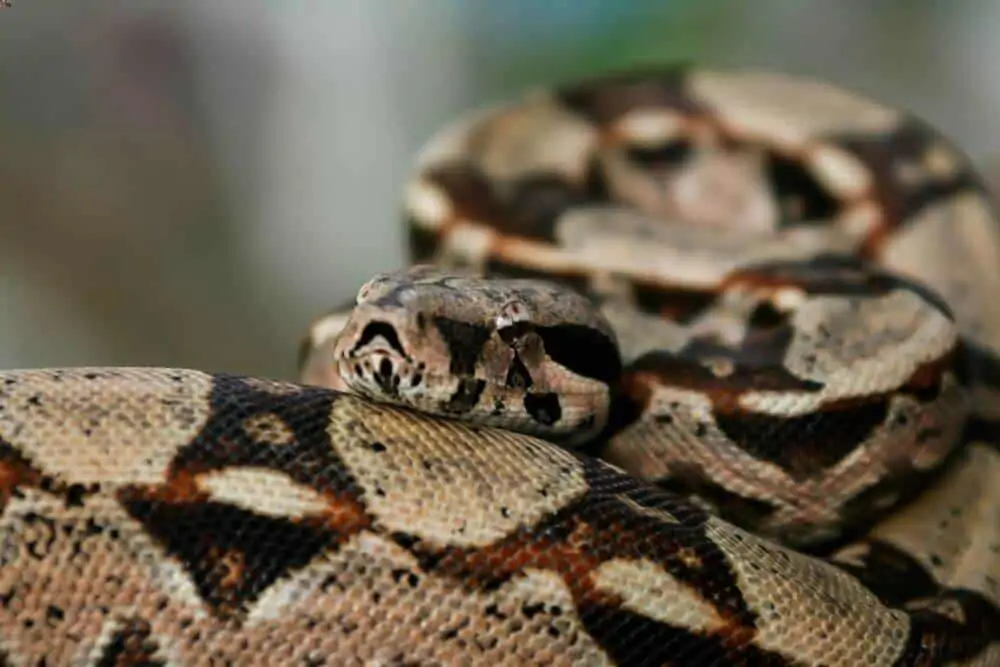
Whatever method you choose, make sure the temperature in this warm area sits at roughly 90 degrees. Never let the basking area get hotter than 95 degrees.
A standard day/night cycle is crucial. Colombian red tail boas are largely nocturnal, so keeping the lights on a timer will maintain the reptile’s circadian rhythm.
UVB lamps are not necessary. Most owners do not use them. However, you can add a UVB lamp to your lighting arrangement if you want to be on the safe side.
Humidity
Humidity levels should be around 50 to 60 percent at all times. Use a digital hygrometer to check levels daily.
Daily misting will help to keep humidity levels high. Absorbent substrates, plants, and water dishes will help as well.
Expert Tip: In times of shedding, you can increase the humidity levels to about 70 percent. But do so cautiously to avoid causing any respiratory problems.
Water
We recommend adding a shallow water bowl to the enclosure. Your Colombian red tail boa will use this to soak and cool off. You’ll rarely see them drink from it, but it’s still a necessary addition.
Make sure that the bowl is large enough for your pet to get in and coil up. Many snakes will use the bowl to soak. You might see them defecate in it as well.
Keep an eye on the dish and replenish water as needed.
Food & Diet
Colombian red tail boas are 100 percent carnivores. In the wild, these snakes are ambush predators. This means that they remain still until a suitable prey animal walks by.
For this reason, many owners choose to provide live animals. You can do this as well, but you have to keep an eye on the feeding process to ensure that the food doesn’t injure the snake. Alternatively, you can use thawed frozen foods, but some snakes will avoid it because it’s not moving.
The primary food source should be mice and rats. Choose an appropriately sized rodent for your snake. Rodents should be no bigger than the widest part of the body.
Larger females may require more substantial prey animals. Many will require animals like rabbits, guinea pigs, or chickens.
Expert Tip: Younger snakes require food every 10 days or so. As they reach adulthood, you can scale back and only provide meals every 14 days.
Potential Health Issues
Many health issues could plague the Colombian red tail boa. Most of the common health-related problems found in captive snakes are entirely avoidable.
Take, for example, respiratory infections and bacterial issues. Respiratory infections are usually a result of inadequate living conditions. Wrong temperatures and low humidity levels are the most common culprits.
These infections will affect the soft tissue in your snake’s nostrils and throats. In severe cases, you may see bleeding or some other kind of discharge.
In the case of bacterial issues, poor hygiene is usually to blame. You must spot clean messes as you see them. About once a month, a full sanitization of the enclosure is required. Clean out every surface and use a reptile-safe disinfectant to keep bacteria under control.
Another common health issue with Colombian red tail boas is mites. Mites are tiny parasitic bugs that feed on your snake’s body. Think of them as the fleas of the snake world. Snake mites easily spread, so you must always remember to wash your hands and limit cross-contamination.
Behavior & Temperament
The Colombian red tail boa is a solitary animal that prefers to stay by itself. While some owners have been able to house females together, we don’t recommend trying it. These snakes do best when kept in separate habitats.
Throughout the day, you might see your snake basking or relaxing in the hide box. They are primarily nocturnal, so most of the activity is reserved for nighttime hours.
Expert Tip: Younger snakes may climb on branches or perches. They are semi-arboreal in their youth. However, the snakes grow out of this behavior as adults and stick to the ground once they get a bit bigger.
Aggression isn’t a huge issue with this snake. For the most part, Colombian red tail boas are docile. They can strike when nervous, but if you do your part to avoid stress and surprise there’s a very low chance of them biting you.
Handling Them
Like other boas, Colombian red tails don’t mind a bit of handling. However, you must wait until the snake trusts you.
Early on, this may take some time. Don’t push the snake out of its comfort zone. Give it some time to get familiar with its surroundings and your presence.
Once you cross that threshold, these snakes will have no problem with handling. In fact, they will often seek out warm areas on the body before getting settled.
Handle your snake frequently to maintain its peaceful nature.
If your snake seems agitated or stressed, avoid handling for the time being. Check the enclosure conditions and address any problems to help them relax before attempting to handle them again.
Conclusion
Colombian red tail boa care is quite manageable for owners with a bit of experience. We have heard of beginners having success keeping these snakes as pets, but it’s not something we recommend.
If you’re knowledgeable, prepared, and committed to providing great care for many years, we think these snakes are a great choice!

